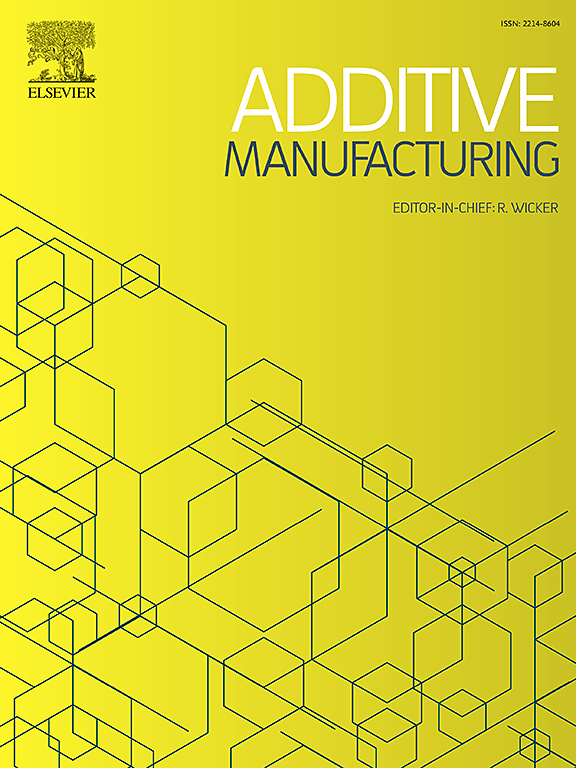Ductile fracture model describing the impact of internal pores: Model development and validation for additively manufactured Ti-6Al-4V
IF 10.3
1区 工程技术
Q1 ENGINEERING, MANUFACTURING
引用次数: 0
Abstract
Additively manufactured metals often contain pores, which limit the strength and ductility of resulting components. In this study, a ductile fracture model was developed to describe the effect of pore size, in terms of absolute and relative metrics, on fracture strain under uniaxial tension. The model approximates lack of fusion (LoF) pores as penny-shaped cracks, and damage accumulation was based on the J-integral and secondary Q parameter. The model was calibrated with Ti-6Al-4V samples with intentionally introduced pores fabricated by laser powder bed fusion (PBF-LB) additive manufacturing (AM) in as-built and heat-treated conditions. The model captures the experimentally observed size effect, where for a given pore area fraction, larger samples fracture at smaller strains. By identifying the critical pore size for a single, isolated pore for either load or displacement-controlled applications, the model developed in this study is a crucial step to developing a comprehensive fracture model for establishing confidence in the structural capability of pore-containing additively manufactured components.
求助全文
约1分钟内获得全文
求助全文
来源期刊

Additive manufacturing
Materials Science-General Materials Science
CiteScore
19.80
自引率
12.70%
发文量
648
审稿时长
35 days
期刊介绍:
Additive Manufacturing stands as a peer-reviewed journal dedicated to delivering high-quality research papers and reviews in the field of additive manufacturing, serving both academia and industry leaders. The journal's objective is to recognize the innovative essence of additive manufacturing and its diverse applications, providing a comprehensive overview of current developments and future prospects.
The transformative potential of additive manufacturing technologies in product design and manufacturing is poised to disrupt traditional approaches. In response to this paradigm shift, a distinctive and comprehensive publication outlet was essential. Additive Manufacturing fulfills this need, offering a platform for engineers, materials scientists, and practitioners across academia and various industries to document and share innovations in these evolving technologies.
 求助内容:
求助内容: 应助结果提醒方式:
应助结果提醒方式:


